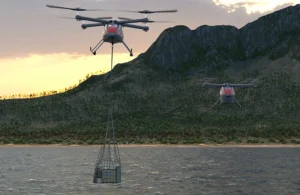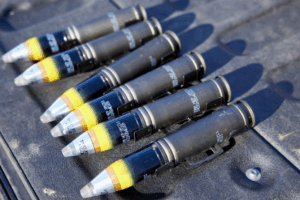
The Army has chosen a team of Near Earth Autonomy and Kaman Air Vehicles [KAMN] to demonstrate a large resupply drone solution capable of carrying payloads between 800 and 1,400 pounds, the companies said on Thursday. The two firms said their heavy-lift vertical takeoff and landing (VTOL) UAS prototype will be based on Kaman’s KARGO UAV model, which the Marine Corps also previously selected for its own logistics drone project. “This heavy-lift vertical takeoff and landing UAS will take soldiers…

 By
By 











